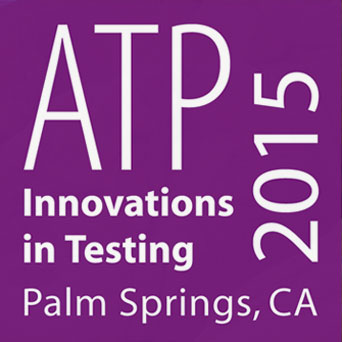Monday, March 02, 2015, 10:15 AM – 11:15 AM (PST)
The 2014 Testing Standards: Implications for Assessment Organizations
Practice Area Division(s): Certification/Licensure, Workforce Skills Credentialing, Industrial/Organizational, Education
Topic: Testing, Measurement, and Psychometrics
The Standards are designed to promote sound and ethnical use of tests, as well as provide a basis for evaluating the quality of testing practices. The Standards provide criteria for evaluating tests, testing practices, and the effects of test use. This breakout session will focus on changes and refinements within the 2014 Standards for Educational and Psychological Testing (AERA, APA, and NCME, 2014) which have potential implications for organizations which develop, operate and use assessments in educational, employment and credentialing settings.
For example, changes from the 1999 to 2014 Testing Standards could have significant impact on the following processes:
-
Broader view of the intended audience for the Standards – broadened to include students, policy-makers, and test-users, as well as measurement professionals (Plake and Wise, In press).
-
Test development - reference to universal design and evidence-center design practices.
-
International contexts – impact of globalization and more frequent use of assessments with different cultures across traditional national boundaries.
-
Fair ness – a major reorganization and elevation of this concept as foundation to the validation argument, as well as the focus away from special interest groups (e.g., ELL) to the needs of all examinees.
-
Overarching standards – identified for all chapters except applications and meant to convey the intent of each chapter. These standards are viewed as applicable and essential to all tests (Place and Wise, In press).
-
For motive and interim assessments and how Standards may or may not apply to these types of uses.
-
Technology – how innovative item types, the use of multiple platforms or a variety of devices might impact comparability across devices, modes (paper and digital) as well as security and other related issues.
-
Evidence – what types of documentation would be required to support claims and intended uses?
In addition, the introduction notes that all standards should be met before operational test use, unless otherwise specified in the Standards. While this statement is not new, what are the implications for innovative assessments and overall test development?
Panelists were members of either the AERA-APA-NCME Management or Joint Committees which oversaw and completed the 2014 revision, respectively.
PRESENTERS:
Wayne Camara, ACT, Inc.
Walter (Denny) Way, Pearson
Nancy Tippins, CEB/Valtera


